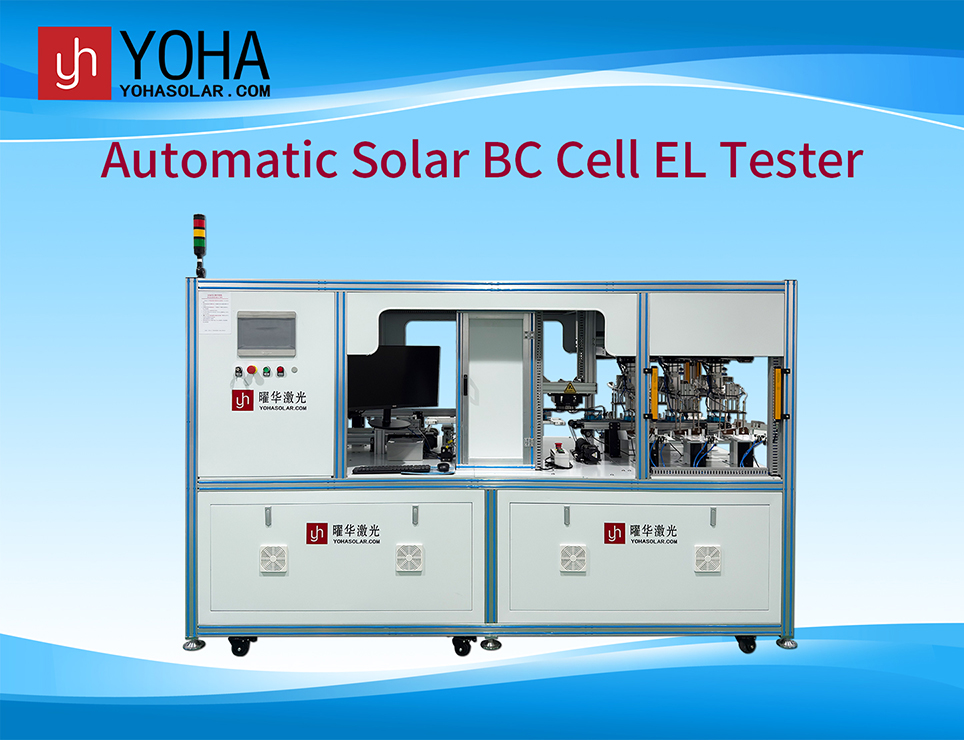Welcome to Wuhan Yoha Solar Technology Co., Ltd!
common problem
Site Map
Language:
 Chinese
Chinese
 English
English
Welcome to Wuhan Yoha Solar Technology Co., Ltd!
common problem
Site Map
Language:
 Chinese
Chinese
 English
English
In the photovoltaic manufacturing sector, quality is the lifeline. Every solar panel leaving the factory impacts the long-term, stable power generation revenue of a power plant. How can we accurately and efficiently detect potential internal defects without compromising the module's structure? This relies crucially on a vital quality control equipment – the Solar Panel EL Analyzer. Like a quality inspector with "X-ray vision," it can reveal hidden issues invisible to the naked eye, making it an indispensable key link in ensuring the superior quality of PV modules.
Working Principle of the Solar Panel EL Analyzer: The Ingenious Application of Electroluminescence Technology
To understand the importance of the Solar Panel EL Analyzer, one must first grasp its core principle – the electroluminescence effect. Contrary to the principle of generating electricity under light, when a forward bias voltage is applied to a crystalline silicon cell, injecting current into it, charge carriers within the cell recombine, emitting infrared light with a wavelength around 1100nm. The intensity of this luminescence is directly related to the minority carrier concentration and the internal defect status of the cell.
The Solar Panel EL Analyzer utilizes precisely this principle. It applies a controlled current to the module under test via a specialized power supply system, stimulating it to produce electroluminescence. Simultaneously, a high-sensitivity infrared camera lens rapidly captures this invisible infrared light and converts it into visible grayscale or color images. In a normal EL image, the cells appear uniformly bright. However, any internal defects, such as micro-cracks, broken fragments, shunting, sintering issues, or material inhomogeneities, will cause reduced recombination luminescence intensity in those areas, manifesting as distinctive dark areas, black spots, or uneven patterns in the EL image. Therefore, the essence of the Solar Panel EL Analyzer is a sophisticated system integrating precision power control, high-resolution infrared imaging, and intelligent image analysis.

Core Components: The Makeup of an Efficient EL Analyzer
A complete Solar Panel EL Analyzer typically consists of the following core subsystems working in synergy:
Precision Power Unit: Responsible for providing stable, programmable forward bias current to the solar panel. Its output must be sufficiently stable to ensure clear, distinguishable luminescence images, and the current/voltage should be adjustable to accommodate the testing needs of modules with different power ratings and specifications. This is the energy foundation of the entire equipment.
High-Performance Infrared Imaging Unit: This is the "eyes" of the equipment. Its core is a CCD or CMOS camera highly sensitive to near-infrared light (especially the 1100nm band). To obtain clear images, it usually requires high-quality fixed-focal-length lenses and operation in a darkroom environment to avoid ambient light interference. The camera's resolution, signal-to-noise ratio, and exposure control capabilities directly determine the accuracy of defect detection.
Mechanical Structure and Safety Protection System: Includes a test station for placing and clamping the module, a darkroom structure, and safety interlock devices. The test station ensures good contact between the module and the electrodes, the darkroom blocks external light, and the safety system ensures absolute operator safety in the high-voltage testing environment.
Intelligent Image Analysis and Software Platform: This is the "brain" of the Solar Panel EL Analyzer. The advanced software system is not only responsible for controlling hardware coordination and image acquisition but also, more crucially, performs automatic analysis of the EL images. Using built-in intelligent algorithms, the software can automatically identify, classify, and mark various defect types, such as cracked cells, broken fingers, black cores, etc., and generate detailed test reports, providing Intuitive data support for process improvement and quality judgment.
Key Roles and Application Points in the PV Manufacturing Process
The Solar Panel EL Analyzer is used throughout multiple key stages of PV manufacturing, and its application points directly reflect its value:
Incoming Cell Inspection: Using the EL analyzer for sampling or full inspection of cells before they enter the production line helps weed out cells with pre-existing issues like micro-cracks or efficiency variations, preventing defective raw materials from causing greater losses in subsequent processes.
Post-Stringing Inspection: After cells are interconnected into strings, another EL test can promptly identify new micro-cracks or circuit damage caused by improper soldering practices (e.g., over-soldering, poor contact).
Pre-/Post-Lamination Testing: The lamination process involves high temperature and pressure, which can induce or exacerbate micro-cracks in cells. Conducting EL tests before and after lamination can precisely pinpoint which stage a defect originated from, providing critical evidence for process tracing and optimization.
Final Product Inspection: This is the most important application point for the Solar Panel EL Analyzer. Performing 100% EL inspection on every finished module ensures that products delivered to customers are free of internal defects, forming the cornerstone of building brand reputation and fulfilling warranty commitments.
Technology Trends: Faster, Smarter, More Integrated
As the photovoltaic industry advances towards higher efficiency and larger scale, new demands are placed on the Solar Panel EL Analyzer. Future technology trends mainly include:
High Speed and High Throughput: Integrated with automated production lines, inline EL test equipment needs to complete image capture and analysis for a module within seconds to meet increasing production cycle times.
Deep Application of AI: Utilizing deep learning algorithms enables the equipment to identify and classify complex defects more accurately and rapidly, even predicting defect evolution trends, reducing reliance on manual interpretation, and improving consistency and reliability of judgments.
Integration with Other Testing Technologies: Combining EL testing with PL (Photoluminescence) testing, IV curve testing, and other functions into a single unit allows for multi-dimensional, comprehensive analysis of module performance and quality, providing a more holistic quality assessment report.
Conclusion
In summary, the Solar Panel EL Analyzer is a core piece of equipment in modern PV intelligent manufacturing and quality control systems. Through non-destructive testing, it visualizes the internal "health status" of modules, providing manufacturers with crucial quality data. Investing in advanced and reliable Solar Panel EL Analyzers is not only a key method for controlling production costs and improving product yield but also a strategic move for building core brand competitiveness and gaining global market trust. In the pursuit of higher reliability and longer lifespan for PV modules today, the value of this equipment with "X-ray vision" becomes increasingly prominent.
keywords:TOP
18086473422
MESSAGE
